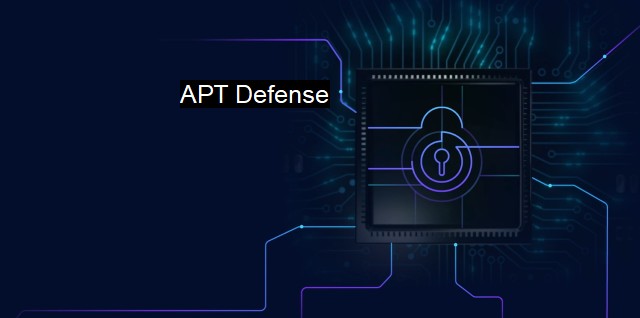What is APT Defense?
Apt Defense: Implementing Advanced Artificial Intelligence for Proactive Cybersecurity Strategy
"Apt defense" in the context of cybersecurity and antivirus refers broadly to the advanced and intuitive strategies, tools, and practices adopted to protect an online ecosystem effectively against cyber threats.We live in a digital age where technology is intertwined with almost every aspect of our lives. While it offers us numerous advantages, it also opens up a vast realm of cyber vulnerabilities. Cybercrimes such as online fraud, identity theft, and ransomware attacks have become commonplace, causing businesses and individuals colossal financial and reputational loss. As such, apt defense mechanisms have become the backbone of our digital society, ensuring secure transactions and communication.
Contrary to standard security measures, which rely primarily on predefined rules and signatures to identify threats, an apt defense in cybersecurity is a more proactive and flexible approach. It involves the use of advanced machine learning algorithms, artificial intelligence (AI), and data analytics technologies to predict, identify, analyze, and neutralize potential threats even before an attack is realized.
Apt defense in cybersecurity leverages more than programmed pre-emptive defenses against known threats. It recognises that cyberattacker strategies are continually evolving and becoming sophisticated. Thus, rather than merely reactively shielding against known threats, an apt defense builds layers of protection capable of adapting to new threats, mitigating attack impact, and ensuring minimal system disturbance even under threat.
One of the pivotal aspects of an apt defense in cybersecurity is the use of dynamic security controls. Traditional security solutions mostly provide static defenses which detect threats by comparing them with known threat signatures. modern cyber threats often mutate or have no prior signatures, making them hard to detect with such static defenses. An apt defense employs dynamic security controls that document and learn from each interaction to detect anomalies in the system, helping prevent zero-day attacks.
An apt defense strategy includes threat intelligence. Threat intelligence involves collecting, analyzing, and using information about emerging and existing cyber threats, providing a comprehensive view of potential threat landscapes. By understanding the tactics, techniques, and protocols of attackers, businesses can anticipate attacks, devise strategies to defend themselves, and minimize disruption.
Apart from preventative tools and strategies, apt cybersecurity defenses involve constantly educating users about good security practices and encouraging safety habits. After all, the most advanced defense systems may become ineffective if users are negligent or uninformed about security protocols. Such practices include secure browsing, regular software updates, caution with suspicious emails and attachments, and strong, regularly updated passwords.
The use of automation and orchestration is another important feature of an apt defense strategy. As the digital space grows, manually triaging and neutralizing threats becomes inefficient. Automation integrates security solutions and accelerates response times, while orchestration streamlines the management of security components.
Despite having robust security systems, the potential for security breaches cannot be entirely ruled out. Therefore, an apt defense strategy includes effective incident response plans. It ensures quick detection, swift resolution, and comprehensive root-cause analysis to prevent any future recurrence.
Lastly, maintaining security visibility is integral. This identifies risks before exploitation by continuously monitoring the online ecosystem, analyzing risk factors and identifying vulnerabilities.
Apt defense in cybersecurity represents an all-encompassing approach involving a range of best practices, technologies, and processes. It marks an evolution from traditional, static defenses towards automated, dynamic, and intelligent security solutions. Apt defense is not just a reaction to cyber threats but a mitigating and preventive strategy incorporating preparatory and evolving tactics. This approach ensures that cyber defenses can innovate and advance at pace with the escalating sophistication and volume of modern cyber threats. It focuses on being adaptive, predictive, and thus truly apt in mounting an effective defense.

APT Defense FAQs
What is Apt Defense?
Apt Defense is a cybersecurity solution designed to provide advanced threat detection and protection against targeted attacks, also known as advanced persistent threats (APTs). It uses a combination of behavioral analysis, machine learning, and threat intelligence to identify and defend against sophisticated malware and cyberattacks.How does Apt Defense protect against APTs?
Apt Defense uses a multi-layered approach to protect against APTs, including proactive threat detection, real-time monitoring, and incident response. It constantly analyzes network traffic, monitors system behavior, and correlates threat intelligence data to identify and block advanced threats. Additionally, it includes features such as sandboxing, file analysis, and endpoint protection, to prevent and mitigate the impact of APTs.Is Apt Defense compatible with other antivirus solutions?
Yes, Apt Defense is designed to work alongside other antivirus solutions, as part of a comprehensive cybersecurity strategy. It can integrate with existing security tools, such as firewalls, intrusion detection systems, and SIEM platforms, to enhance threat detection and response capabilities.Who can benefit from using Apt Defense?
Apt Defense is ideal for organizations of all sizes, particularly those that are at high risk of targeted attacks, such as government agencies, financial institutions, and healthcare providers. However, any business or individual that wants to enhance their cybersecurity posture and protect against advanced threats can benefit from using Apt Defense.| | A | | | B | | | C | | | D | | | E | | | F | | | G | | | H | | | I | | | J | | | K | | | L | | | M | |
| | N | | | O | | | P | | | Q | | | R | | | S | | | T | | | U | | | V | | | W | | | X | | | Y | | | Z | |
| | 1 | | | 2 | | | 3 | | | 4 | | | 7 | | | 8 | | |||||||